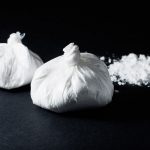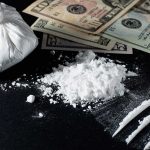- What Is Crack Cocaine?
- Effects Of Smoking Crack Cocaine
- Signs Of Crack Addiction
- Crack Addiction Treatment
- FAQs
In the United States, crack cocaine is considered one of the hardest and most addictive drugs available on the street.
This sigma often discourages those who struggle with crack cocaine addiction from getting the help they likely need. However, like any other form of drug addiction, cocaine use disorder can be addressed through evidence-based treatments methods and ongoing support.
What Is Crack Cocaine?
All crack is cocaine, but not all cocaine is crack.
Crack cocaine is a potent stimulant drug produced by dissolving powder cocaine (cocaine hydrochloride) in water and baking soda, and boiling the mixture until a solid substance is formed, cooled, and divided into chunks.
These “rocks” are not water-soluble, meaning that they can’t be dissolved or injected into the body. But they can be heated on tinfoil or put in a piper and smoked, the vaporized drug then being absorbed into the lungs and bloodstream.
This heating process causes the drug to snap and crackle, which gives crack its name.
Effects Of Smoking Crack Cocaine
While either form of cocaine will have the same basic effects on the human body, the act of smoking crack actually increases the danger of cocaine use. A much larger dose can be inhaled into the lungs and absorbed into the blood extremely quickly.
This means that crack may offer a more intense and powerful high, sending your brain’s dopamine system into overdrive and priming you to want, and crave, the experience of using crack in the future.
But because the drug is absorbed so rapidly, crack highs don’t last very long. This means the person may take repeated hits of crack as quickly as ten or fifteen minutes apart.
As a result, crack cocaine users may engage in prolonged binges to try over and over again to reach the same high. However, this can produce diminishing results and increase pain and exhaustion as the binge finally ends.
Dangers Of Crack Cocaine Use
Crack use is known to cause convulsions, seizures, and sudden death from a heart attack or other cardiovascular failures, even the first time it’s used.
Following a lengthy cocaine binge, individuals may experience:
- paranoia
- anxiety
- depression
- suicidal thoughts
- psychosis
- tactile hallucinations like the feeling of bugs moving under the skin
Long-term, crack abuse can damage a person’s mental health and function as well as cause cardiovascular damage, sleep disturbances, weight loss, malnutrition, and premature aging.
Signs Of Crack Addiction
Telltale signs of recent crack cocaine abuse include:
- hyperactivity
- reduced inhibition and increased social impulse
- dilated (expanded) pupils
- shakiness
- overconfident or aggressive behavior
- increased breathing, blood pressure, heart rate, and body temperature
- reduced appetite
Signs of long-term, chronic use of crack cocaine may include:
- frequent disappearances
- burned, cracked, or blistered fingers or lips
- hoarse voice or sore throats
- lengthy periods of exhaustion or sleep
- mood swings, irritability, and other unexplained personality and behavioral changes
Crack Addiction Treatment
The short- and long-term effects of crack abuse can devastate your physical, mental, and emotional health, as well as your relationships, finances, and ability to function at work or in class.
And what’s worse, while these harms may be clear and obvious to drug-free family members and loved ones around you, the addictive effects of cocaine may make it hard to care about or even recognize how much damage has already been done.
However, addiction can be treated with common treatment programs that may include:
Medical Detoxification
While dependency caused by crack cocaine is different from alcohol or methamphetamine dependence, this drug can cause mental and physical withdrawal symptoms.
Crack withdrawal symptoms may include restlessness, mood swings, agitation, fatigue, vivid dreams and difficulty sleeping, and intense drug cravings.
Medical detox programs can help you deal with these effects safely and with the support you need to get through withdrawal and move on to either inpatient or outpatient treatment.
Note that crack cocaine cravings can last for several weeks after your last use before gradually fading away and reemerging intermittently in the months to come.
Inpatient Treatment
Residential treatment programs are highly-structured and offer intensive care with close, long-term access to treatment staff.
Through inpatient care you can get the time and seclusion you need to work on yourself and build towards a safe and lasting recovery before you transition back home.
Outpatient Treatment
If you need a more flexible treatment program, outpatient care can give you access to professional treatment without isolating you inside a treatment facility. But be prepared to make several trips a week to meet for treatment sessions that include individual and group counseling.
Behavioral Therapy
Behavioral therapy helps you identify harmful thought patterns, habits, and triggers that contribute to your addiction. This approach then replaces these habits with healthier patterns of thinking and other beneficial coping strategies.
To learn about our treatment options for crack cocaine addiction or other substance use disorders, please contact Northeast Addictions Treatment Center today.
Frequently Asked Questions
Why Is Crack So Addictive?
While crack cocaine and powder cocaine are both the same drug, albeit in different chemical forms, crack is typically smoked, not snorted. Smoking delivers the drug to the bloodstream much more quickly, resulting in a more intense and more addictive high.
Learn more about Why Crack Is So Addictive
How Is Crack Made?
Crack cocaine is made by mixing cocaine powder with water and either ammonia or baking soda. The mixture is boiled to form a solid, which then dries to form crack rocks. These rocks are broken down and sold as crack cocaine.
To learn more, read How Is Crack Made?
What Does Crack Smell Like?
What crack smells like depends on what it’s made of or what it’s cut with. However, in general, crack smells like burnt rubber, burnt plastic, or powerful chemicals.
Learn more about How To Identify Crack By Smell
How Long Does Crack Cocaine Stay In Your System?
Crack cocaine stays in your system for about 7.5 hours after you last use it. Drug tests can detect crack cocaine use anywhere between several hours to 90 days later. Crack cocaine can cause long-term effects on your body even after you stop taking it.
To learn more, read How Long Does Crack Stay In Your System?
Can You Overdose On Crack-Cocaine?
You can overdose on crack cocaine just like you can from any form of cocaine. An overdose can lead to heart attack, stroke, and even death.
Learn more about Crack-Cocaine Overdose
What Are The Symptoms Of Crack Cocaine Withdrawal?
Acute (short-term) symptoms of cocaine withdrawal may include drug cravings, agitation, restlessness, irritation, depressed mood, fatigue, increased appetite, vivid dreams, and (less commonly) suicidal thoughts, hallucinations, and psychosis.
Acute symptoms generally persist for three weeks or less, though cravings, mood changes, and feelings of anxiety and depression may sometimes linger for several months.
Learn more about Crack Cocaine Withdrawal
What Does Crack-Cocaine Look Like?
Crack-cocaine is a solid, rock form of cocaine that is white, off-white, or yellow in color. It is produced by heating a mixture of powdered cocaine hydrochloride and baking soda. This process turns the powder form into a solid rock that can be broken into chunks.
Learn more about How To Spot Crack-Cocaine
Can You Inject Crack Cocaine
Crack cocaine can be dissolved into a soluble form and used for injection. To dissolve crack, one must use ascorbic acid, lemon juice, or vitamin C. Once dissolved and made soluble, the cocaine is placed into a needle and inserted into a vein on the body.
However, injecting crack cocaine can lead to severe effects and various dangers.
To learn more, read Can You Inject Crack Cocaine?
Is It Possible To Identify Fake Crack?
In theory, an experienced person would be able to tell the difference between crack cocaine and other drugs, including bath salts (synthetic cathinones), based on their physical properties.
However, because crack is produced in such non-standard conditions with so many potential additives, there is no truly reliable way for a person to identify real or fake crack without laboratory testing.
Learn more about how to spot Fake Crack-Cocaine
What’s The Street Value Of Crack Cocaine?
Crack cocaine usually costs between $18 and $200 per gram. The exact price depends on certain factors.
For example, in most cases, the drug costs less in big cities, where higher supply leads to lower prices. It also tends to be cheaper when it contains adulterants, such as laundry detergent or caffeine.
To learn more, read How Much Does Crack Cocaine Cost?
Can You Snort Crack Cocaine?
You can snort crack cocaine but it has to be crushed up before it can be inhaled. The high may take longer to kick in compared to smoking crack, and snorting can damage the inside of your nose and lead to other harmful effects.
Learn more about Snorting Crack Cocaine
What Does Crack Taste Like?
Crack has a bitter taste. Crack cocaine looks like a white or off-white crystal, and can smell like burnt plastic.
To learn more, read What Does Crack Taste Like?
How Long Does A Crack High Last?
A crack cocaine high lasts for only 5 to 10 minutes on average. The short, intense high from crack cocaine can encourage repeated drug use in a short amount of time, leading to long-term health effects.
To learn more read How Long Does A Crack High Last?
Sources
- National Institute on Drug Abuse (NIDA) — How is cocaine addiction treated?
- National Institute on Drug Abuse (NIDA) — What are the long-term effects of cocaine use?
- National Institute on Drug Abuse (NIDA) — What are the short-term effects of cocaine use?
- National Library of Medicine: MedlinePlus — Cocaine
Written by
Northeast Addition Editorial Team
©2024 Northeast Addition Center | All Rights Reserved
This page does not provide medical advice.





